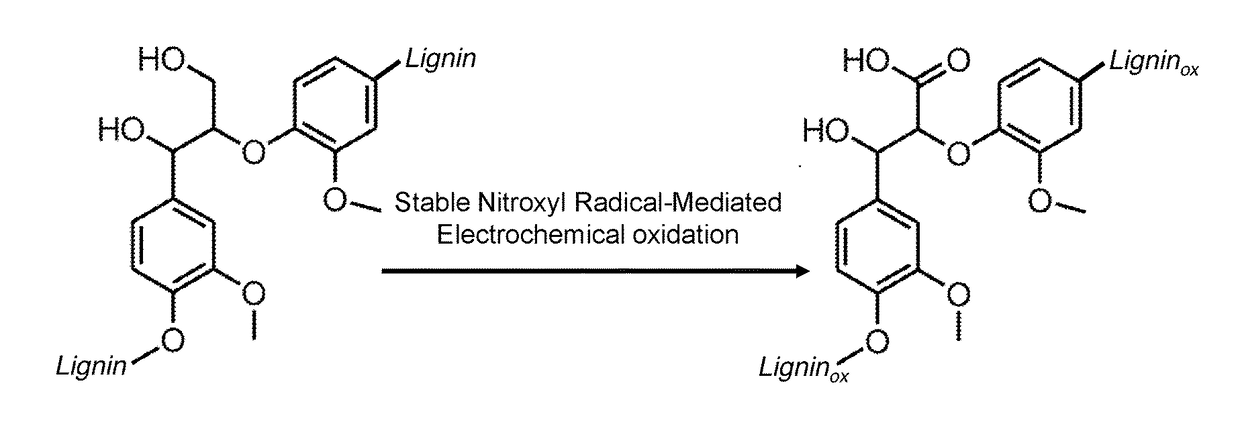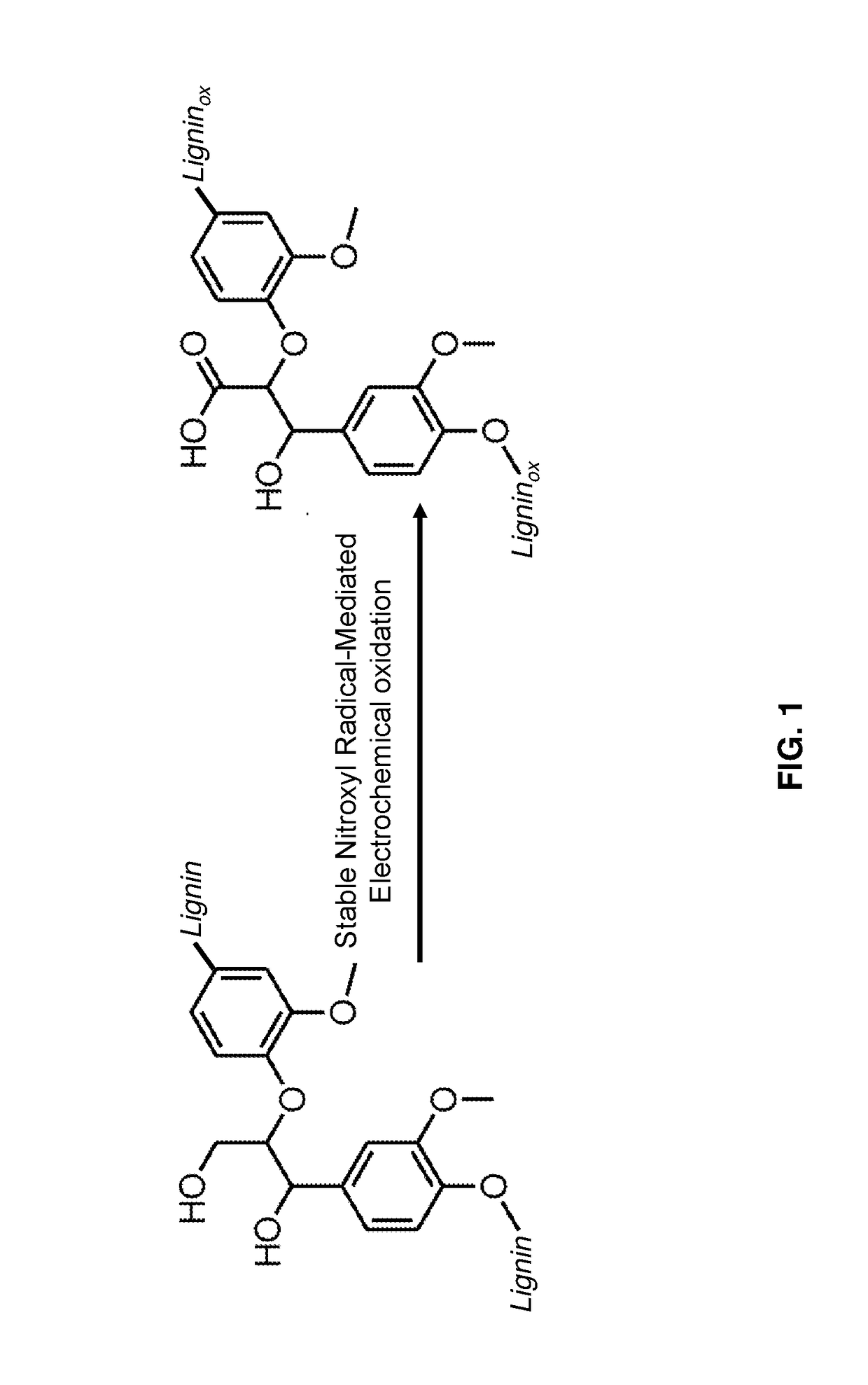Polycarboxylated compounds and compositions containing same
a polycarboxylated compound and polycarboxylated compound technology, applied in the field of nitroxylmediated electrocatalytic oxidation of lignin, can solve the problems of notoriously difficult selective modification or break down of lignin into simpler compounds, and achieve the effect of enhancing the yield of aromatic monomers and oligomers
- Summary
- Abstract
- Description
- Claims
- Application Information
AI Technical Summary
Benefits of technology
Problems solved by technology
Method used
Image
Examples
example 1
emical Nitroxyl-Mediated Oxidation of Lignin and Conversion to Low Molecular Weight Aromatic Compounds
[0122]The use of biomass as a renewable resource of chemicals and energy is becoming progressively indispensable and will be crucial in the foreseeable future in light of the depletion of fossil fuels (Zakeski et al. 2010). Cellulose and lignin are the main components of biomass and are some of the most abundant terrestrial biopolymers (Boerjan et al. 2003), making these polymers promising candidates for use as feedstock for the renewable production of chemicals and fuels. Enzymatic hydrolysis followed by fermentation is already utilized for the production of ethanol from cellulose (Li et al. 2015). Attention has therefore focused on lignin as a polyaromatic byproduct of this process.
[0123]The depolymerization of lignin, however, has proved difficult due at least in part to the different types of linkages and diversity in structure (Boerjan et al. 2003). The main existing protocols ...
example 2
xylated Lignin: A New Polyelectrolyte / Polycarboxylic Acid
[0143]Lignin is the second most abundant renewable biopolymer next to cellulose (Wang et al. 2015). Lignin is widely available as a major byproduct of industrial processes involved in retrieving cellulose, such as in cellulosic ethanol production and paper production. For several years, the majority of lignin has been combusted for heat and power generation, e.g., in the recovery section of the kraft process, which is a low value application (Konduri et al. 2015). It was known and is becoming clear that lignin, as an aromatic polymer that makes up 15-30% of biomass, can be considered as the major renewable source of aromatic chemicals. Several efforts have been devoted to valorization of lignin for deriving monomeric aromatic compounds and are still ongoing (Li et al. 2015). However, to date, lignin is the only biopolymer for which there is no industrial process for its breakdown. The lack of a regular structure and diverse mo...
PUM
| Property | Measurement | Unit |
|---|---|---|
| pH | aaaaa | aaaaa |
| solubility | aaaaa | aaaaa |
| molecular weight | aaaaa | aaaaa |
Abstract
Description
Claims
Application Information
 Login to View More
Login to View More - R&D
- Intellectual Property
- Life Sciences
- Materials
- Tech Scout
- Unparalleled Data Quality
- Higher Quality Content
- 60% Fewer Hallucinations
Browse by: Latest US Patents, China's latest patents, Technical Efficacy Thesaurus, Application Domain, Technology Topic, Popular Technical Reports.
© 2025 PatSnap. All rights reserved.Legal|Privacy policy|Modern Slavery Act Transparency Statement|Sitemap|About US| Contact US: help@patsnap.com



